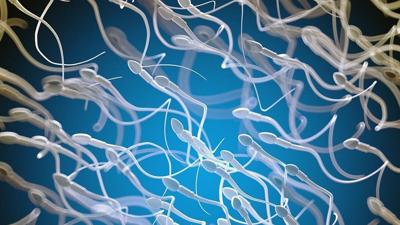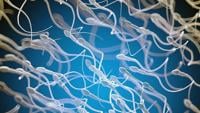Key Takeaways
A new AI-guided process to find viable sperm has resulted in its first successful pregnancy
The system uses AI to scan through millions of images taken from a sperm sample
Two sperm drawn by the system were used to create embryos
WEDNESDAY, Nov. 5, 2025 (HealthDay News) — The first successful pregnancy has occurred using sperm gathered with advanced artificial intelligence (AI), researchers say.
The fertility team used AI to scan the male partner’s semen sample for two viable sperm, which were then used to create two embryos and start a pregnancy, researchers recently reported in The Lancet.
The couple had been trying to start a family for nearly 20 years, but the man’s low sperm count had thwarted their efforts, researchers said.
This new technique could help other infertile couples in which the male suffers from azoospermia, in which their ejaculate contains little to no sperm, researchers said.
“A semen sample can appear totally normal, but when you look under the microscope you discover just a sea of cellular debris, with no sperm visible,” senior researcher Dr. Zev Williams, director of the Columbia University Fertility Center, said in a news release.
Male factors account for about 40% of couples with infertility, and of those as many as 15% of men have azoospermia, researchers said.
“Many couples with male-factor infertility are told they have little chance of having a biological child,” Williams said.
However, “you only need one healthy sperm to create an embryo,” Williams added.
The new process, called STAR (Sperm Tracking and Recovery), uses high-powered imaging technology to scan through a semen sample, taking more than 8 million images in under an hour, researchers said.
AI identifies sperm cells in the sample, and robotics are used to capture and gently remove them.
This process could replace procedures in which sperm is surgically extracted from a man’s testes, or in which a lab tech painstakingly inspects semen samples manually to find and catch viable sperm, researchers said.
“The field has really been challenged to find a better way to identify and retrieve viable sperm cells in men with exceedingly low sperm counts,” Williams said.
The first couple to use the STAR method to get pregnant already had been through multiple unsuccessful IVF cycles, as well as several manual sperm searches and two surgical sperm extractions, researchers said.
The man provided a 3.5 milliliter semen sample, and within two hours the STAR system had identified two viable sperm cells out of 2.5 million images.
Larger clinical trials are now underway to evaluate the STAR method’s effectiveness among more patients, researchers said.
More information
The Cleveland Clinic has more on azoospermia.
SOURCE: Columbia University, news release, Oct. 31, 2025
What This Means For You
Couples trying to get pregnant may want to ask their fertility clinic if the STAR method might help them.














(0) comments
Welcome to the discussion.
Log In
Keep it Clean. Please avoid obscene, vulgar, lewd, racist or sexually-oriented language.
PLEASE TURN OFF YOUR CAPS LOCK.
Don't Threaten. Threats of harming another person will not be tolerated.
Be Truthful. Don't knowingly lie about anyone or anything.
Be Nice. No racism, sexism or any sort of -ism that is degrading to another person.
Be Proactive. Use the 'Report' link on each comment to let us know of abusive posts.
Share with Us. We'd love to hear eyewitness accounts, the history behind an article.